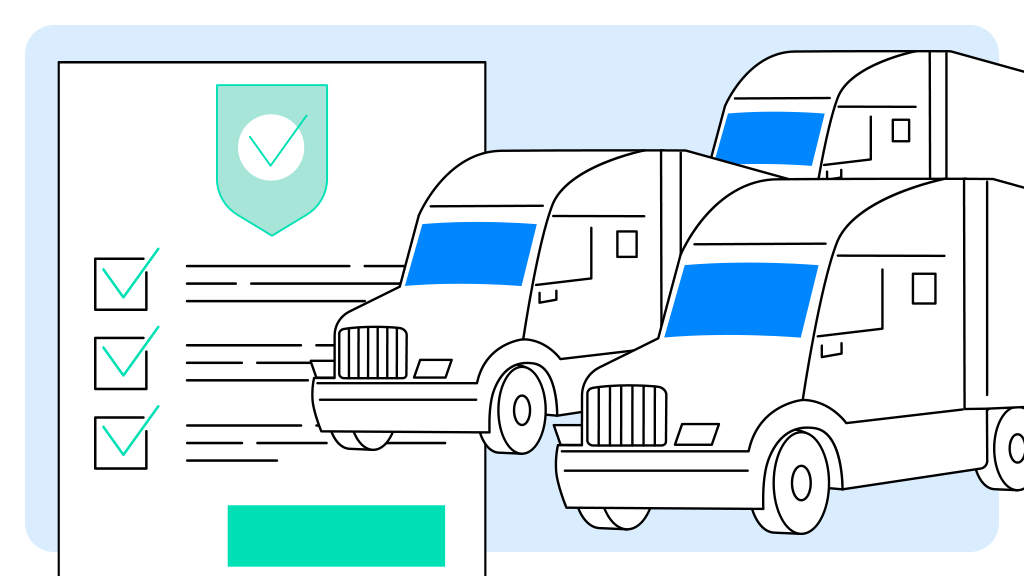IntelliShift CTO, Ryan Wilkinson, shares his thoughts on how unified data, paired with data visualization, can help forward-thinking organizations optimize their business.
It’s no secret that data has the potential to tell the story of how your business is performing. Combining data with the right analytical tools helps you identify trends that can become a roadmap to future success.
This especially holds true for companies with multi-use fleets who understand how their assets and mobile workforce operations affect profitability. These organizations are seeking data-driven insights to increase asset and vehicle monetization and, in turn, profitability.
Operational data doesn’t start and stop with asset and driver location. It extends to safety, compliance, maintenance, resource management, optimized routing, and more. Unifying your data within a single platform is the first step to transforming it into actionable insights that increase productivity and profitability.
Unified Data to Understand the Small and Big Pictures
We take a consultative approach with each client help them fully operationalize and leverage their data. Our goal is to link processes not previously connected to determine cause and effect. In a fully unified system, data from just one operator’s decision gives managers insight into how individual employees and processes impact overall operations.
For example, if a driver does not follow the app-suggested route but instead takes a shorter, more congested road he’s familiar with, the trip may take longer, hard braking may increase, and it could cause him to be 30 minutes late to deliver a product or service to a customer. If these situations recur with this operator or across your workforce, it multiplies the resulting fuel spend, wear-and-tear, and customer dissatisfaction.
When these factors are linked and measured over time, managers can see, address, and then begin to predict the causes of waste, reduced productivity, customer unhappiness, or other operational issues.

WEBINAR: Go Beyond Siloed GPS Tracking and Connect Your Field and Asset Operations
Unified Data to Better Serve Customers
Unifying your data can also help you serve your customers better. A forward-facing benefit of unified data can be seen with our Customer 360 app. Pulling together telematics data, driver data, and customer del ivery details, you can keep customers automatically informed and in control in real time on the day of their delivery or service.
ivery details, you can keep customers automatically informed and in control in real time on the day of their delivery or service.
If a customer is expecting a delivery at noon but is now unable to be there, the customer can see in real-time where their driver is and if need be, reschedule to a better time.
Unifying your data is critical for better delivering on customer expectations every day. Another example is when an emergency response services client receives a call. With a real-time comprehensive overview of their operations combined with optimized routing and operator safety, fleet managers can quickly and safely deploy the closest assets and operators needed for the job. And customers know exactly when they will arrive to help.
Get the Guide: Next-Gen Connected Vehicle & Asset Management Technology
Tailored Dashboards for Informed Decision-Making
Managers working in siloed operations don’t always know where waste or issues occur – or that there even is waste. By comparison, companies that connect cross-functional processes can remove operational bottlenecks as well as spot trends.
Having your real-time and historical data available in a unified platform with dashboards tailored to your business will give you the operational intelligence needed to make smarter in-the-moment decisions for your team and strategic decisions for your bottom line. Data represented by graphs or charts more quickly enables managers to make informed decisions as well as to determine performance benchmarks.

For example, a VP of operations can compare their east versus west coast operations to determine if one region has more accidents, maintenance issues, higher fuel spend, or costly downtime. By analyzing trends and correlations in fuel, maintenance, driver behavior, etc., the VP can see where issues are happening that drive up costs and implement corrections or changes where needed.
Managers who use technology as part of their business strategy are better equipped with the real-time picture they need to make on-the-spot decisions that are both right for the task at hand and for the longer-term business goals.

![Episode 50 Thumbnail Erin celebrates building the fleet community with 50 episodes and 11K followers on LinkedIn [Podcast]](https://intellishift.com/wp-content/uploads/2020/07/bigstock-Infographic-Ui-Data-Visualiza-343092496-scaled-1.jpg)



